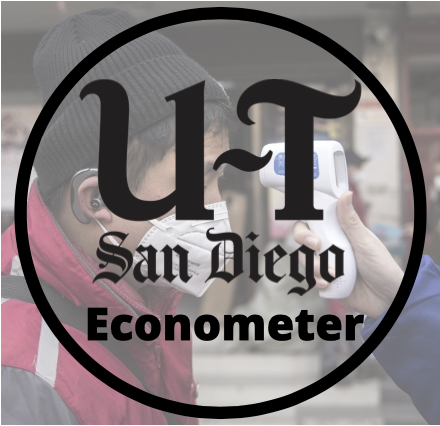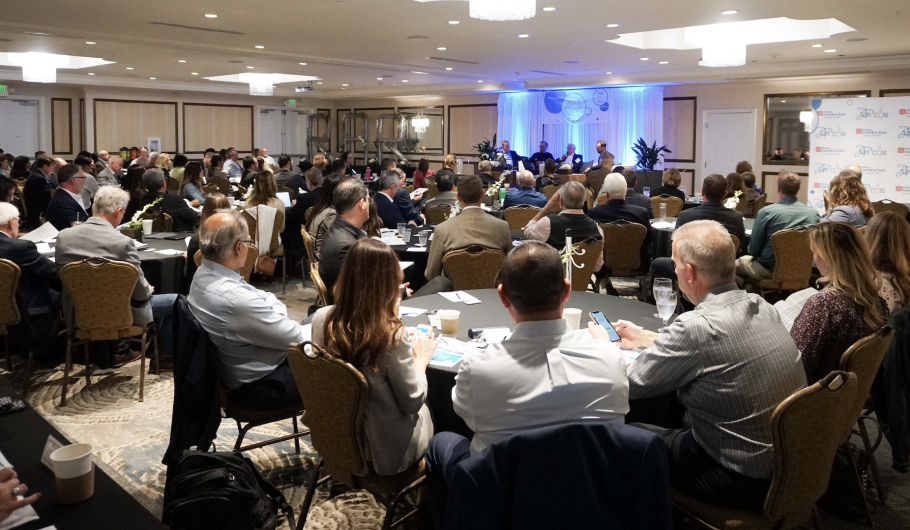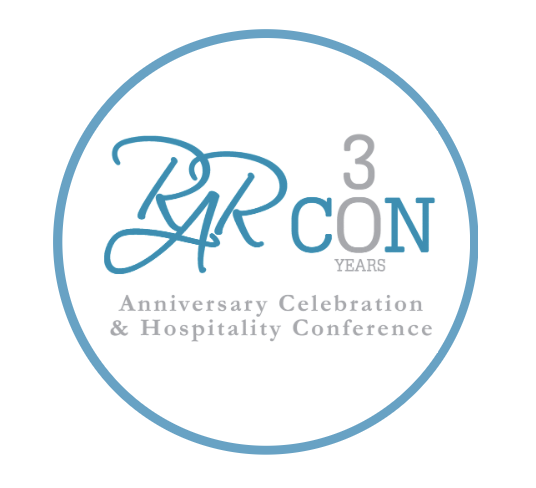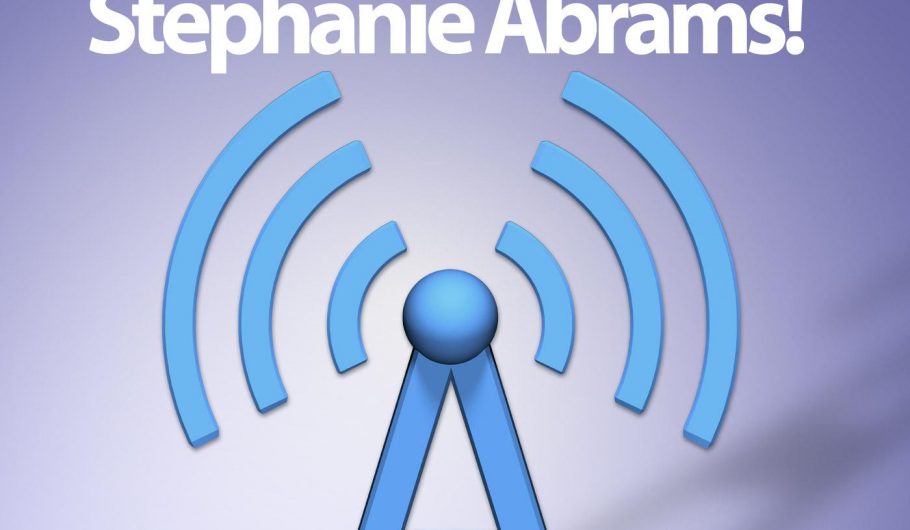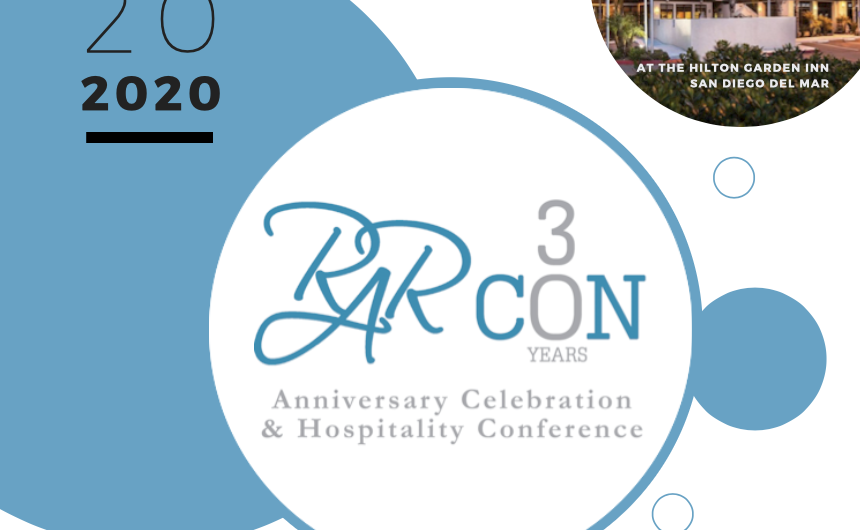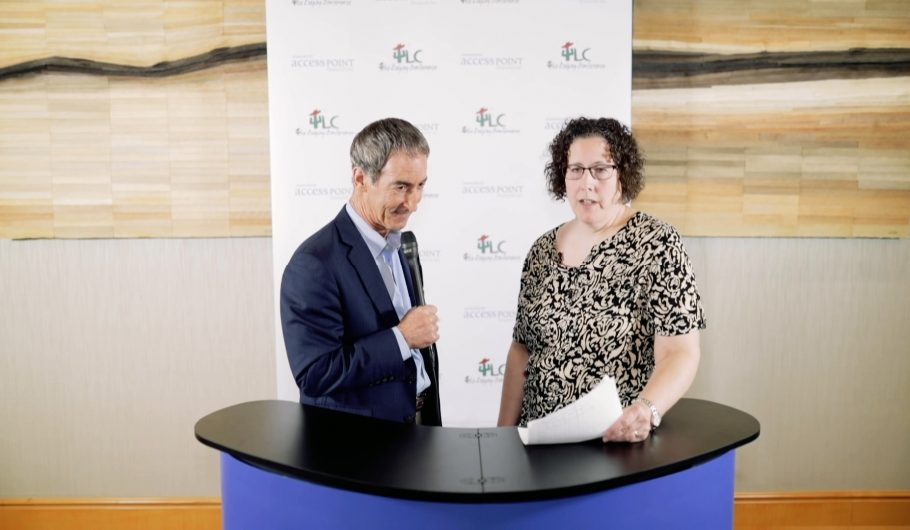Econometer: Could coronavirus kickstart a recession?
Bob Rauch, R.A. Rauch & Associates
NO: Most likely, based on results of SARS in 2003 and other pandemic events, the impact will be tens of billions of dollars per year but not enough to throw a strong U.S. economy into recession. The bottom-line result of coronavirus will likely be enough to reduce GDP by 0.1-0.2 percent. Naturally, certain businesses will suffer more than others. Travel and tourism take the biggest hit but pharmaceuticals may actually improve.
Read full article by Phillip Molnar here.
We will update the impact of the Coronavirus in our next issue as we believe it will be contained within 30 days.
RARCON Recap – San Diego County Performance Update 2020
San Diego County Performance Update 2020
On a national basis, 2019 was marked by a modest slowdown for the hotel industry. This decline has been primarily driven by a decrease in business investment, business confidence, trade fears and the “year before an election year” mindset, where many expect a slight uptick in 2020, even after 10 straight years of growth. “A slide in business travel is expected to continue through the start of 2020 before beginning a soft recovery in Q3. This slowdown should see unemployment tick upwards, but elevated personal savings, low interest rates, moderate inflation, and healthy consumer confidence levels should prevent a steep decline in consumer spending,” according to Tourism Economics. GDP growth is expected to continue in the 2.3 percent range this year according to Bernard Baumohl of the Economic Outlook Group.
Based on that not so robust economy, lodging industry fundamentals have been decelerating as we enter the new decade of the ‘20s. STR projects that all segments are likely to report occupancy decreases in 2020, led by upscale hotels at -0.9 percent. According to STR, luxury will post the biggest gains at 1.2 percent in ADR and 0.9 percent in RevPAR. Looking ahead to 2021, independent hotels are projected to have flat occupancy growth and 1 percent RevPAR growth, while all other segments are expected to report declines in occupancy. Again, luxury in 2021 is projected to show 1.3 percent ADR growth.
Hoteliers can still optimize the performance of their assets, by focusing on creating demand. It is paramount to focus on marketing, sales and revenue strategies that create new demand – sales efforts should be proactive, revenue management requires micro-management of brand revenue managers, distribution strategies and tactics should be driven by a return-on-investment analysis and marketing must be digital and aggressively in pursuit of everything from social channels to remarketing.
Considering that revenues will be difficult to grow in a slow-growth environment, proactive labor cost management strategies to enhance recruitment, training and retention efforts will help reduce turnover and increase social media and guest satisfaction scores. Slower RevPAR growth creates an opportunity to finalize capital projects with less disruption and/or displacement. Robotics can be utilized for delivery to rooms and vacuuming, digital key reduces the need for that extra desk staff and all of these free up the need for managers to perform tasks. A positive work culture will become even more important and the cost of replacing team members should keep us honest about taking care of great employees.
According to Kalibri Labs, average length of stay continues to compress, making optimal channel mix more important than ever. Growth in hotel demand exceeded supply growth in 2019 as evidenced by increases in both Guest Paid RevPAR and Occupancy. Total US loyalty contribution increased +7.6 percent year-over-year to 56.0 percent of total bookings in 2019. When the “book direct” campaigns began in 2016, total yearend US loyalty contribution was 47.9 percent.
Google Trips could have a significant impact on metasearch and marketing overall, so hotels need to pay attention and understand the functionality, how OTAs are participating and what the impact will be on hotels to determine their strategy, including the potential need to shift more of their marketing dollars to Google. Allocations of these dollars should be based on returns that we’re seeing and we should be flexible to change as the performance of different marketing vehicles changes. What works today might not work tomorrow but one thing that will not change is the importance of mobile and the number of hours our potential guests spend on digital media.
San Diego
San Diego’s economy is strong, with unemployment dropping to 2.8 percent at the end of 2019, well ahead of the US at 3.4 percent. In the hotel sector, San Diego’s 2019 supply growth outpaced demand, dropping occupancy levels by 2.4 percent to 76.7 percent. Revenue per available room (RevPAR) contracted 2.1 percent in 2019 to $127.95 after a slight gain in the first half of the year, and average daily room rate (ADR) grew by only 0.3 percent for the year, increasing to $166.78 according to STR.
To provide some perspective, San Diego’s visitor industry employs directly and indirectly 194,000 San Diegans. Visitors spend nearly $11.5 billion annually. San Diego hosts nearly 35.8 million visitors each year, and is a top U.S. travel destination. The industry generates $855 million annually in state and local transient occupancy, sales, and property taxes. 2019 showed mixed results, as visitors to the city declined while expenditures within the destination increased.
San Diego’s current forecast expects prolonged stable visitation growth from 2020 to 2024 and should produce average growth between 1.9 percent and 2.2 percent each year. Both day and overnight visitation are expected to experience moderate gains in 2020, with day visitors (2.6 percent) outpacing overnight (1.9 percent). Room supply growth is expected to outpace demand in 2020 leading to a slight downward trend in occupancy that should stabilize at 76.9 percent. ADR is expected to accelerate to 1.8 percent in 2020 and 2.1 percent in 2021. With the slide in occupancy, RevPAR is expected to show an increase of 1.7 and 2.3 percent in 2020 and 2021, respectively, led primarily by the increases in ADR.
Source: Tourism Economics/STR/SDTA
| Year | Occupancy | ADR | RevPAR |
| 2010 | 66% | $122 | $81 |
| 2011 | 69% | $126 | $87 |
| 2012 | 71% | $132 | $93 |
| 2013 | 72% | $136 | $97 |
| 2014 | 75% | $142 | $106 |
| 2015 | 76% | $151 | $115 |
| 2016 | 77% | $155 | $119 |
| 2017 | 77% | $160 | $123 |
| 2018 | 78% | $165 | $128 |
| 2019 | 77% | $167 | $129 |
| 2020 (forecast) | 77% | $170 | $131 |
Following is a review of 2019 and a forecast for 2020. While 2019 and 2020 will add new hotel supply beyond that of 2018, San Diego will remain a strong market for the foreseeable future and should be able to hold the overall 77 percent occupancy for the next few years.
San Diego County
In 2019, occupancy in San Diego County decreased 2.4 percent to 76.7 percent and average rate grew 0.3 percent to $166.78. Revenue per available room (RevPAR) moved down 2.1 percent to $127.95. New hotels that were added in 2019 included 1,656 rooms with a total impact of 940 rooms and hotels currently under construction in 2020 total 1,440 rooms with a projected impact of 916 rooms.
Note: Impact is determined by the opening date; i.e. a hotel that opens July 1 impacts half of a year.
| Hotels Opened in 2019 | Rooms | Impact in 2019 |
| TownePlace Suites San Diego Central | 106 | 97 |
| Hampton Inn and Suites by Hilton – Liberty Station | 181 | 151 |
| Sycuan Casino Resort Hotel | 302 | 252 |
| Marriott SpringHill Suites | 107 | 71 |
| The Guild Hotel | 162 | 95 |
| Ayres Hotel – Millenia Chula Vista | 135 | 68 |
| TownePlace Suites Liberty Station | 222 | 93 |
| Carte Hotel & Suites Downtown San Diego | 246 | 82 |
| Hampton Inn Chula Vista Eastlake | 104 | 17 |
| Homewood Suites Chula Vista Eastlake | 92 | 15 |
| TOTAL | 1,656 | 940 |
| Hotels Opening in 2020 | Rooms | Impact in 2020 |
| Legacy International Center | 127 | 127 |
| Ayres Hotel Vista | 100 | 83 |
| Hampton Inn El Cajon | 96 | 80 |
| Hampton Inn & Suites Imperial Beach | 100 | 67 |
| Home2 Suites – Carlsbad/Palomar Airport | 146 | 97 |
| Town and Country San Diego – Remodel | 675 | 394 |
| SpringHill Suites Carlsbad San Diego | 104 | 61 |
| The Monsaraz, A Tapestry by Hilton Collection Hotel | 92 | 8 |
| TOTAL | 1,440 | 916 |
In 2019, the 1.5 percent supply increase and 1 percent drop in demand caused a 2.4 percent occupancy decline, largely due to a weak Q4 convention calendar. In 2020, we expect a 1.6 percent increase in demand to keep pace with new supply. Demand in the market continues to be balanced. San Diego remains a top-tier convention destination, with the San Diego Convention Center. Other demand generators, such as Balboa Park, Sea World, the San Diego Zoo, Legoland, the Gaslamp District, Petco Park, and world-class beaches, have helped drive tourism to record levels in the past few years. The local economy continues to expand, with tech startups, increases in military spending, residential development, and record-high levels of visitation. Perhaps one of the biggest impacts to long-term San Diego growth in tourism will be the vote next month on the convention center. Measure C will determine if the Convention Center will expand, putting San Diego in competition for large city-wide conventions or if it will stay a small convention market that cannot handle simultaneous events.
The outlook for the San Diego market is positive due to anticipated high-quality hotels entering the market, the market’s high barriers to entry, the strong base of group and government demand, and favorable economic conditions throughout Southern California.
Downtown
Downtown San Diego hit an occupancy of 80.9 percent, with an average rate of $207.27. A RevPAR decline of 2 percent brought 2019 RevPAR to $167.69. Downtown is driven largely by group business, convention center demand, some corporate and fairly strong leisure demand due to the always improving downtown lifestyle and environment. The convention center alone is expected to contribute significant room nights in the Downtown market (and to other submarkets through compression) from over 130 events. Little Italy, the Gaslamp Quarter and the waterfront provide very strong demand year around.
2020 will bring additional hotel construction as well as strong convention center demand due to strong cyclical bookings by the San Diego Tourism Authority. Two new hotels opened Downtown in 2019: The Guild Hotel that opened in June and the Carte Hotel & Suites Downtown San Diego that opened in September. New supply will be up 3.55 percent while demand will increase by at least three percent due to the convention calendar. We anticipate that Airbnb will have a significant impact on average rates during peak periods, however, the overall annualized impact will be minimal in 2020. The improved convention calendar should keep occupancy levels solid this year.
Point Loma Peninsula
This submarket finished 2019 with occupancy rates of 76.7 percent, down an astounding 4.7 percent from 2018, based largely on new supply growth. Average rates grew to $142.50, up 0.8 percent and RevPAR was $109.31, down by 4 percent. Hotels here are generally close to the airport and of all product types from full-service to limited-service, waterfront to near downtown transient accommodations.
Perhaps the single most interesting development in this sub-market has been the growth of Liberty Station. This combination arts and foodie district has stimulated significant lodging supply and demand. Point Loma had 403 rooms added in 2019 from the TownePlace Suites Liberty Station and Hampton Inn and Suites by Hilton – Liberty Station. The Monsaraz, A Tapestry Collection Hotel is expected to open in Q4 of 2020. This market has been extremely steady and will drop occupancy levels for a year or two before rebounding back toward 80 percent.
Mission Valley
The Mission Valley submarket saw occupancy levels of 78.3 percent in 2019, down 3.9 percent from 2018. Average rates were $126.71, down 1.3 percent from 2018 and RevPAR was $99.17, down by 5.1 percent. The Mission Valley submarket has seen a fundamental shift away from the older Hotel Circle hotels of the 1970s and 1980s to branded, strong limited-service products and mostly renovated full-service hotels. Demand is driven largely by groups and leisure but has been increasingly gathering corporate business. Mission Valley hotels opened in 2019 included TownePlace Suites San Diego Central with 106 rooms.
In 2020, the Legacy International Center will add 127 rooms to Mission Valley in Q1. This non-traditional lodging facility should have minimal impact on traditional lodging supply and demand dynamics. The multi-million-dollar renovation of the Town and Country Hotel, however, will impact this market.
La Jolla
The La Jolla market had occupancy levels of 75.7 percent, a decrease of 1.9 percent from 2018. Average rates grew almost 2 percent to $257.07 with RevPAR showing no change from 2018 at $194.54. This submarket has very strong leisure business, some group business and light corporate business. It includes all of the hotel product in or around the Village of La Jolla. La Jolla is a favorite of higher end leisure travelers. With no new supply, the pattern of growth for this normally very strong submarket will continue albeit in a somewhat muted way.
Mission Bay
Mission Bay hit occupancy levels of 77.4 percent, down 4.6 percent over 2018. Average rates were $193.55, down by 1.3 percent and RevPAR was $149.90, down 3.4 percent year over year. Mission Bay is a group market with mostly older, waterfront hotels that have been substantially renovated. In most cases, these are independent hotels that benefit from a strong amenity package and waterfront locations. Mission Bay has not added new hotels and will continue to perform well.
Year over year change in supply in Mission Bay increased by 0.3 percent, while demand declined by 4.4 percent. We expect an uptick in demand in this normally very strong market. No new hotels are opening in Mission Bay, but the $35 million-dollar rebranding of Paradise Point to become Margaritaville will change the dynamics of this market segment.
Northwest
In 2019 San Diego County Northwest (Del Mar/Oceanside) saw a decrease in occupancy to 71.5 percent, down 3.3 percent from 2018 with average rates up 0.3 percent to $166.82. RevPAR saw a decline of 3.3 percent, moving down to $122.43. Led by a very solid Carlsbad market, this area benefits from strong corporate and leisure demand but new supply over the past couple of years has reduced Carlsbad occupancy levels.
Oceanside has finally blossomed into a force with solid leisure demand and amenities that include a new Oceanside High School Performing Arts Center, 1,000 slip harbor, airport, San Luis Rey Mission and Mira Costa College. New full-service lodging will also increase demand going forward. The area has seen massive increases in supply over the past few years and has absorbed this supply well as Carlsbad continues to have a deep reservoir of industrial and corporate demand generators including ViaSat and ThermoFisher Scientific. LEGOLAND California, Carlsbad Premium Outlets and Carlsbad’s downtown Village provide strong leisure demand. Having said that, the supply of limited-service hotels needs to slow as demand cannot continue to keep the pace of recent supply growth. The SpringHill Suites Carlsbad San Diego is expected to add 104 rooms in June of 2020.
North Inland
This submarket hit occupancy of 74.1 percent, down 2.1 percent from 2018. Average rates were $144.77, up 4 percent year over year. RevPAR was $107.26, up 1.8 percent from 2018. This area includes Kearny Mesa, Rancho Bernardo and Miramar and has recently become better equipped to handle leisure business with the combination of the San Diego Zoo Safari Park, golf courses, wineries, breweries and other attractions. It includes residential areas, commercial and light industrial districts. Military demand stems from the Marine Corps Air Station in Miramar.
The Marriott SpringHill Suites added 107 rooms to the market supply in May of 2019.
Northeast
In 2019 San Diego County Northeast (Escondido, San Marcos, and Vista) saw occupancy levels increase to 71.2 percent, up 0.6 percent with rates up to $116.57, an increase of 1.4 percent, and RevPAR up 1.9 percent to $84.74. Escondido has finally created a cross-section of demand generators in the corporate and leisure markets, San Marcos has benefited from very strong growth in the health care and education sector, and Vista is located proximate to both Carlsbad and San Marcos with its own industrial park demand.
The SR-78 corridor, coupled with the growth of California State University San Marcos, Palomar Community College, Pima Medical Institute and other health care facilities and population growth make this an area that is desirable. Springhill Suites opened in Escondido in the spring of 2019 and the Ayres Hotel Vista will add 100 new rooms to the market in March 2020.
North Coastal
This group of hotels finished 2019 at 81.1 percent, a slight decrease of 0.3 percent from 2018 and had an average rate of $186.58, with no change year over year. RevPAR showed a slight decrease of 0.2 percent from 2018 at $151.25. This submarket includes Sorrento Valley, Carmel Valley and UTC and continues to be an 80 percent plus market.
Half the hotels are full-service and the other half are limited-service and they range from the Fairmont Grand Del Mar on the high end to economy properties in Sorrento Mesa. The market has strong group, leisure and corporate demand from multiple industrial parks, biotechnology, life science and medical equipment companies as well as the communication technology sector. Its proximity to Del Mar expands the reach of hotels here by providing very strong leisure demand and the renovation of UTC will be a major plus later in 2020.
By Robert Rauch and Sarah Andersen
RARCON – 2020 Lodging Forecast
Register for RARCON HERE.
In just two weeks, we will be presenting everything from digital marketing, revenue management, hotel sales and operations, to legal trends, hotel finance and a deep dive into southern California’s lodging industry. On a national basis, 2019 was marked by a modest slowdown for the hotel industry. This decline has been primarily driven by a decrease in business investment, business confidence, trade fears and the “year before an election year” mindset, where many expect a slight uptick in 2020, even after 10 straight years of growth.
“A slide in business travel is expected to continue through the start of 2020 before beginning a soft recovery in Q3. This slowdown should see unemployment tick upwards, but elevated personal savings, low interest rates, moderate inflation, and healthy consumer confidence levels should prevent a steep decline in consumer spending,” according to Tourism Economics. GDP growth is expected to continue in the 2.3 percent range (actual GDP growth was 2.3% in 2019) this year according to Bernard Baumohl of the Economic Outlook Group.
Based on that not so robust economy, lodging industry fundamentals have been decelerating as we enter the new decade of the ‘20s. Further, Coronavirus impacts are unknown at this time and could materially impact global and US room demand. STR reports that supply will grow at 1.9% in 2020 and will continue at that pace in 2021. Demand will grow at 1.6% in 2020 and is anticipated to pick up to just 1.7% in 2021, continuing to drop occupancy levels slightly. National occupancy will drop .3% in 2020 and will drop another .1% in 2021 with average rates up modestly at .3% in 2020 and .6% in 2021. That leaves RevPAR flat in 2020 and up .5% in 2021.
According to STR, luxury will post the biggest gains at 1.2% in ADR and 0.9% in RevPAR. Looking ahead to 2021 independent hotels are projected to have flat occupancy growth and 1% RevPAR growth while all other segments are expected to report declines in occupancy. Again, in 2021 luxury is projected to show 1.3% ADR growth.
Operational Performance
Hoteliers can still optimize the performance of their assets, by focusing on creating demand. It is paramount to focus on marketing, sales and revenue strategies that create new demand – sales efforts should be proactive, revenue management requires micro-management of brand revenue managers, distribution strategies and tactics should be driven by a return-on-investment analysis and marketing must be digital and aggressively in pursuit of everything from social channels to remarketing and personalization.
Considering that revenues will be difficult to grow in a slow-growth environment, proactive labor cost management strategies to enhance recruitment, training and retention efforts will help reduce turnover and increase social media and guest satisfaction scores. Slower RevPAR growth creates an opportunity to finalize capital projects with less disruption and/or displacement.
Trends from 2020-2030
These trends include new privacy regulations this year in California, expanded use of artificial intelligence at a fast pace, digital transformation, sustainability and more. The presidential election and local races can have a big impact on the economy as they determine what we want as a nation, state and city. Major issues include immigration and border security, foreign relations, health care, women’s reproductive rights, education, the environment, guns, regulations, trade, defense, the economy and all of the state and local regulations and issues.
Technology changes in the form of digital transformation will happen and quickly. Intelligent automation, moving to the cloud, cybersecurity and overall digital disruption will rule this decade. Millennials are taking over and Generation Z is right on their heels, already spending dollars on experiential travel.
More extreme weather patterns like wind, rain and high tides coupled with the need for cybersecurity are two areas we must be prepared for in the coming years. Amazon and particularly Google will become forces to be reckoned with in the lodging distribution game. Commissions from hotels alone are low hanging fruit for them. Amazon has access to customers and has a competitive advantage in understanding customer behavior. Google owns search. They will be direct players soon enough and Google Trips could have a significant impact on metasearch and marketing overall. It is up to us as hoteliers to ensure that a competitive OTA field means lower commissions.
Robotics can be utilized for delivery to rooms and vacuuming, digital key reduces the need for that extra desk staff and all of these free up the need for managers to perform tasks. A positive work culture will become even more important and the cost of replacing team members should keep us honest about taking care of great employees.
According to Kalibri Labs, average length of stay continues to compress, making optimal channel mix more important than ever. Growth in hotel demand exceeded supply growth in 2019 as evidenced by increases in both Guest Paid RevPAR and Occupancy. Total US loyalty contribution increased +7.6% year-over-year to 56.0% of total bookings in 2019. When the book direct campaigns began in 2016, total yearend US loyalty contribution was 47.9%.
We expect cancellation policies will be tightened up this year. Disincentives will be introduced to avoid guest booking and canceling. After all, it is expensive just to secure a reservation today – time to ensure the guest shows up or pays. We expect hoteliers to pay more attention to the entire booking process by understanding all traffic sources, which pages are the most common along the booking path and how those metrics shake out. Understanding paid media results and the impression that guests receive when looking at their web site is very important!
Wellness will add value to the guest stay more going forward. Talent has become the new currency and office innovation could actually make hotels more of the center of the universe as their open spaces are appreciated by millennials and Gen Z alike. Sustainability, with the advent of “netzero” carbon impact will become a profitable concept and autonomous cars are not more than 15-20 years away. This will impact parking needs albeit not so much in the 2020s but shortly thereafter. Look for a need for more “drop off” space rather than parking space needs soon. The 2020s will be fast moving with a rapid rate of innovation in AI and other areas. Enjoy the ride!
“Travel with Stephanie Abrams!” Radio Show Commentary
Robert Rauch was on the December 15, 2019 “Travel with Stephanie Abrams!” Radio Show in hour 2.
Click here to listen to this recording in the audio archive.
Click here for the shownotes for this broadcast.
Robert Rauch was also on the December 14, 2019 “Travelers411” Radio Showin hour 1.
Click here to listen to this recording in the audio archive.
Click here for the shownotes for this broadcast.
Check out Travelers411 Directory for RAR Hospitality HERE.
RARCON – The Future
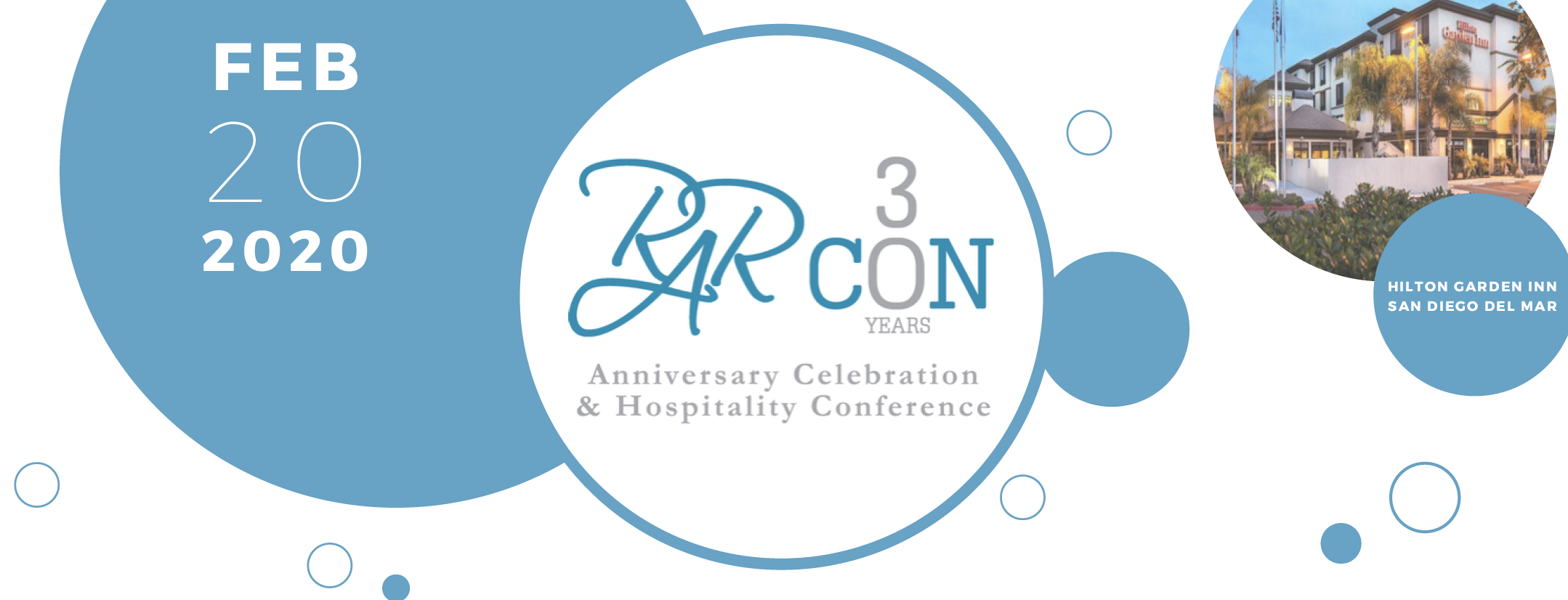
Network, learn from top industry leaders, engage in discussion and CELEBRATE 30 years of hospitality success with RAR.
Click HERE to reserve your seat.
2010-2020
The decade began in 2010 with President Obama signing into law a new health care bill. 2011 brought us the successful raid on Osama bin Laden. 2012 brought us a re-election victory by Barack Obama and 2013 was a busy year that may have been dominated by the terror attack at the Boston Marathon.
Domestic challenges increased in 2014 when violence flared up in Ferguson, Missouri after a grand jury declined to indict a police officer in the shooting of Michael Brown. 2015 brought major social change with gay marriage becoming a nationwide right and the global agreement on climate change.
In 2016, we elected Donald Trump as president in one of the greatest upsets in political history. 2017 brought us the Las Vegas massacre among many other events and 2018 jump-started the “me-too” era when Leslie Moonves stepped down from CBS amid sexual-misconduct allegations.
Impeachment talk dominated in 2019 but the U.S. economy proved resilient and recession fears seemed to disappear for now. The economy entered the longest expansion in American history, surpassing the economic boom of the 1990s.
Consumer confidence continues to drive economic growth going into 2020 based on a strong labor market and very strong stock market and despite marginal business confidence.
The trade dispute with China hasn’t seemed to affect consumer spending in the U.S. while other economies were softer in 2019. The U.S. economy expanded for a record 126th straight month in December, the longest expansion on record and perhaps ending the only decade without entering a recession.
2020-2030
Risks going forward include the budget deficit that could reduce the likelihood of sustainability of this economy and any unexpected “event.” So, where does 2020-2030 take us? The elections of 2020 will prove the most divisive of all time, even more so than 2016. The real changes, however, will occur in the fast-moving trends that we have identified in our top trends of 2020.
These trends include new privacy regulations, expanded use of artificial intelligence, digital transformation, sustainability and more. Yes, the presidential election and local races matter. They determine what we want as a nation. Major issues include immigration and border security, foreign relations, health care, women’s reproductive rights, education, the environment, guns, regulations, trade, defense, the economy and much more.
Either way, technology changes in the form of digital transformation will happen and quickly. Intelligent automation, moving to the cloud, cybersecurity and overall digital disruption will rule this decade. Millennials are taking over and Generation is right on their heels, already spending dollars on experiential travel.
Come to RARCON, our 30th anniversary event. We will celebrate our 30 years, provide insights on the future and allow for a totally unique, San Diego hospitality experience in just half a day.
Speakers include:
Joe Terzi, CEO of the San Diego Tourism Authority
Guy Maisnik, Partner at JMBM, the leading hospitality industry law firm in the U.S.
Alan Reay, the most knowledgeable spokesperson on hotel values
Lily Mockerman, CEO of TCRM, a top, woman-owned business in revenue management
Kerri Kapich, Chief Operating Officer, San Diego Tourism Authority
Holly Zoba, Owner of Influencer Sales, a unique sales training program
Cameron Lamming, President & COO, RAR Hospitality
Bob Rauch, CEO, RAR Hospitality
Visit our website.
Register for RARCON here.
Q: Do companies need to worry about social media backlash to advertisements?
YES: Companies should always worry about backlash if they do something that is highly controversial. As for Peloton, I’m not sure why they would have had any backlash over the ad in question because the product is for fitness.
However, I certainly understand why Nike had some backlash re: Colin Kaepernick.
We are in a social media-driven environment and need to use caution with our messaging or risk paying a price.
Read full article by Phillip Molnar here.
Econometer: What are you thankful for about the economy?
Bob Rauch, R.A. Rauch & Associates
I’m thankful for an economy that has delivered growth, stability, low interest rates, strong employment and more: With 10 straight years of growth, there can be no mistake that regulatory relief, tax cuts and pro-business political decisions work for the economy. Locally, I’m thankful for the Convention Center expansion opportunity, the continued presence of the military, our phenomenal attractions, all our great companies in communications technology, bio-sciences and more as well as our great universities.
Read full article by Phillip Molnar here.
Asset Management 2020
By Robert Rauch, CEO RAR Hospitality
In the hospitality industry, asset management means dealing with all processes that allow hotel owners to optimize value, minimize costs and ensure the smooth running of hotel operations. A hotel manager and owner may not be completely aligned due to the inherent differences in goals and objectives. This is why an asset management perspective is needed to balance operating modalities with owner’s financial objectives.
Hotel asset managers represent the interests of hotel owners and assist them in various phases of an asset’s lifecycle. It is crucial that these individuals stay informed of the latest hospitality industry trends and uncover new opportunities for financial improvement.
Asset Managers identify any new source of potential revenue by analyzing both the operational side and the property side of the hotel. While some are paid third party asset managers and others are on the ownership side but have significant experience, their main duties include:
Operational Analysis & Review
• Determine areas where the property is performing well and areas that are in need of improvements
• Careful review of both income statement and balance sheet monthly. These reports help hotel owners in important decision-making regarding their financial performance, renovation requirements, staffing and more
• Detailed review of all management company or GM monthly reports
Property Repositioning Analysis
Asset managers must regularly conduct analyses to determine how the hotel is positioned in the market from the perspective of the customer and from the perspective of the hotel’s brand management. This is done with monthly or regular physical inspection of the property including front and back of house. In addition, a review of annual tax issues and opportunities is needed.
Areas where an asset manager can be helpful include a review of STR reports, guest service scores, channel management review and electronic documents including the hotel’s web site. There are times when a hotel must re-evaluate STR competitors and whether or not additional third-party reports are needed. Paying for reports that are not helpful is foolish but not paying for reports that are in fact helpful is just as bad or worse.
Risk Evaluation
Identifying key hotel risks and developing strategies to mitigate their effects is the job of the asset manager. Often times, there is no manager on duty at hotels or no plan in place for handling emergencies. Both of these conditions could present a challenge when an event takes place. These events can include medical emergencies, public disasters and active shooters as well as a plethora of unplanned events. A well-trained staff is paramount to success operationally and also helps avoid disasters.
Strategic Lodging Management
Asset managers must analyze both external factors and internal resources to work out a strategic plan for hotel development, renovation and operations. Unwavering adaptability to the market and to the evolution of the hospitality industry is needed to handle changes in overall hotel direction. Whether or not to brand an independent hotel, focusing in on renovation timing and providing assistance with the business plan are all elements of guiding a hotel.
Evaluating potential investment returns and conducting a detailed analysis of future market trends are both jobs that an asset manager should be able to accomplish. Reviewing loan documents, assuring there are controls on hotel cash and purchases are in the asset management wheelhouse.
Once an Asset Manager has completed a detailed analysis of the wider hotel business and evaluated all the revenue generated by the different departments (Rooms, Spa, Food and Beverage, etc.), they work on identifying ways to maximize revenue generated by the different services that the hotel offers to ensure the profitability of the hotel. Their productive management of capital expenditure, contracts and expenses will help your hotel stand out from the competition. For more information on asset management as a field, see the Hotel Asset Managers Association (HAMA) at http://www.hamagroup.org/.
The Lodging Conference: Bob Rauch & Cameron Lamming, RAR Hospitality
The Lodging Conference 2019, the annual event’s 25th edition, featured a new look and a new home at the JW Marriott Phoenix Desert Ridge. But one thing that hasn’t changed is the wealth of information about the lodging industry that can be gained at the conference.
Hotel Management Editor-in-Chief Stefani C.
O’Connor and Senior Managing Editor Elaine Simon interviewed a number of hospitality experts at HM’s news desk during the conference to find out why they were in attendance and what they are looking forward to as the calendar flips to 2020.
This video features Bob Rauch, chairman and CEO of RAR Hospitality.
This video features Cameron Lamming, president and COO at RAR Hospitality.





